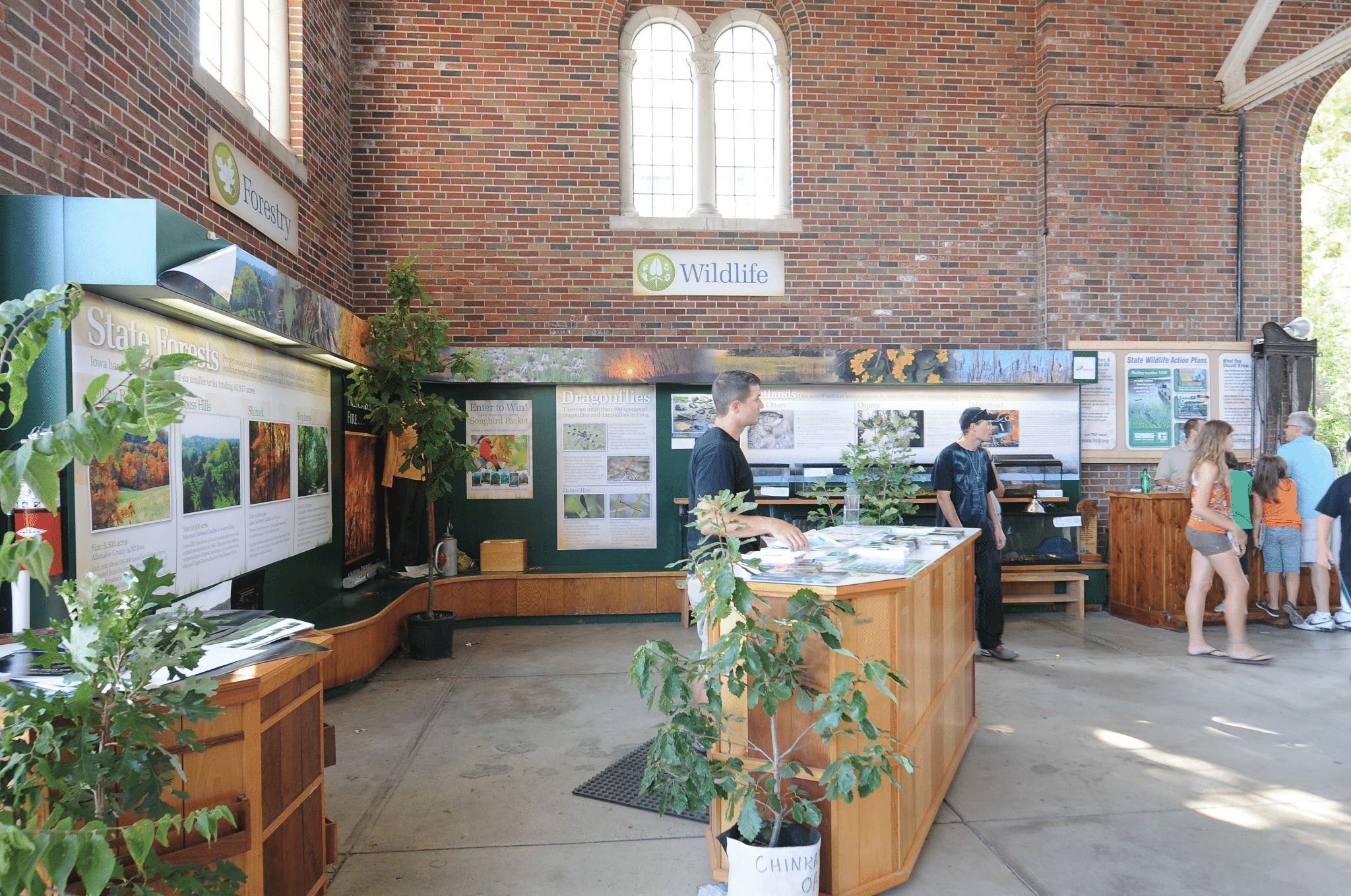History of the Iowa State Fair

History of the Iowa State Fair
How Do You Fair? In 2021, the question begs an answer for many Iowa State Fairgoers – what do they want to eat, see and watch at the internationally-acclaimed event? After postponing in 2020 due to the coronavirus pandemic, the Iowa State Fair is planning a comeback summer event like none other, August 12-22.
The Iowa State Fair began in Fairfield in 1854. From 1855-1878, the Fair was held in Fairfield, Muscatine, Oskaloosa, Iowa City, Dubuque, Burlington, Clinton, Keokuk and Cedar Rapids. It moved to Des Moines in 1879, and has been held at its permanent, present location since 1886.
With a park-like, 450-acre setting, the Fairgrounds and adjoining 160 acres of Campgrounds are listed on the National Register of Historic Places. Many of the late Nineteenth and Twentieth Century exposition-type buildings on the grounds pre-date World War 1.
Many of the original buildings have been renovated over time, thanks to the generous support of the Iowa State Fair Blue Ribbon Foundation. In recent years, the Bruce L Rastetter 4-H Building, Iowa State Fair Grandstand, Oman Family Youth Inn and other buildings have been renovated, allowing Fair traditions to continue on for generations to come.
The Iowa State Fair features the outdoors just as much as its buildings. Pella Plaza is between the Agriculture Building and Livestock Pavilion, providing a resting place for families to stop and enjoy several water features. The Principal Plaza at Legacy Terrace also provides a park-like area with trees, water fountains and benches for Fairgoers to stop and rest before enjoying the rest of the Fair. The newest, Ruan Plaza provides a pedestrian-friendly connection between Grand Avenue and the Richard O. Jacobson Exhibition Center.
Just inside the main gate, the Department of Natural Resources building showcases a graceful-arched brick pavilion, built between 1926 and 1929. The Italian Renaissance-inspired building has stone-trimmed arches supported by Corinthian columns, along with arched windows, wrought-iron false balconies and intricately carved swans and eagles that allude to the building’s purpose. Over the course of eleven days, the DNR building is open to visitors and has several fish aquariums, displays and exhibits of Iowa’s wildlife and outdoors.
In 2021, the DNR will be renovating large fish tanks to bring back many popular fish. They will also have the BB Gun Range open as well as hunting and fishing-themed programs and presentations throughout the Fair. This year, Fairgoers can stop by the DNR courtyard for interactive presentations every day at 11 a.m., 1 p.m. and 3 p.m.
In 1887, the Fair Board had a commission to plant 1,500 trees at the cost of $330 – only 22 cents per tree! The trees today create a natural shade for Fairgoers, from Fun Forest’s grassy park to Pella Plaza’s tree awning. Fairgoers can learn more information about select Fairground trees by going on an interpretive trail, created by the Iowa Woodland Owner’s Association. This adventure is a 1.2-mile-long journey across the Fairgrounds. The trees have markings for easy identification and offer a QR code that, after scanning, provides detailed information and pictures on each tree. The Iowa Woodlands Owners Association works in partnership with Iowa State
University Extension and the Department of Natural Resources.
Near the Susan Knapp Amphitheater, Fairgoers can go back in time and enjoy a stop at Mountain Man camp. The camp area includes Native American housing displays, presentations, crafts, food, and interactive activities like tomahawk and knife throwing.
It is easy to fill the day with Kid-friendly adventures from rides and games to demonstrations and presentations. The Blue Ribbon Kids Club meets each day at Fun Forest for interactive fun at 10 a.m. and then the Fun Forest stage is full of entertainment. Directly behind the Fun Forest stage, you can find a shaded playground, wooden train, and commemorative Baby Mine elephant statue. Hike just a few steps up the hill and you can find Art
Attack for kids in the Cultural Building courtyard, or the livestock barns, milking parlor or baby animals depending on what direction you walk. Behind the Fun Forest Stage is the historical Agriculture Building housing the famous butter cow, but also showcasing Iowa’s honey bees and various crops or commodity groups from Iowa. The stage in the Ag Building has many educational presentations during the day including weed identification, floriculture and more.
Livestock competitions are a pillar for the Iowa State Fair, hosting many national shows during the Fair. From dogs, to goats, from swine to equine, from llamas to rabbits, there isn’t a day at the Fair that you can’t find animals. The Avenue of Breeds is a showcase of unique livestock you might not know live in Iowa, including catfish, emu, and elk. The Animal Learning Center is popular for the live births taking place daily and the opportunity to do yoga or chores with the baby animals.
If you are a fierce competitor, the Fair offers contests and special events each day. You might want to try your hand at camp fires, cribbage, BBQ, bags, horseshoe pitching, monster arm wrestling, or fly tying to name a few. If quilting or baking are more your speed, we have the largest food and quilt competitions of any state fair and there is big prize money on the line for many of the entries.
It’s hard to imagine 11 days with so many things to do and see. Since it began, the Fair has been an institution, serving to educate, inform and entertain people from all walks of life. It’s also serves as the celebration of all that is uniquely Iowan. Start planning today; find the Fair’s 2021 daily schedule online at www.iowastatefair.org. “How Do You Fair?” August 12-22, 2021.
by John Chalstrom
August 2021


